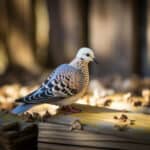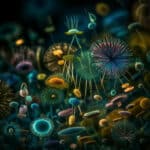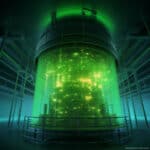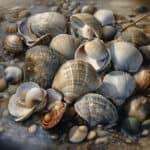Salmon, the iconic fish that is highly valued for its taste and nutritional benefits, have a diverse diet that includes a wide range of organisms. While they are known for consuming other fish, insects, and crustaceans, one might wonder if salmon also eat phytoplankton, the microscopic plants that form the foundation of the aquatic food chain. In this article, we will explore the dietary habits of salmon and delve into whether or not they feed on phytoplankton. Join us as we uncover the fascinating world of salmon and their relationship with these tiny, but vital, organisms.
Key Takeaways
- Salmon primarily feed on zooplankton and small fish, rather than phytoplankton.
- Phytoplankton serves as a vital food source for zooplankton, which in turn becomes prey for salmon.
- The consumption of phytoplankton indirectly supports the growth and survival of salmon populations.
Understanding Phytoplankton: The Basis of Aquatic Food Chains

A. What is Phytoplankton?
Phytoplankton are microscopic, plant-like organisms that inhabit the world’s oceans, lakes, and rivers. They play a crucial role in the marine ecosystem as the foundation of the aquatic food chain. These tiny organisms are responsible for producing around half of the Earth’s oxygen and are vital for sustaining life in the oceans.
Phytoplankton are incredibly diverse, with thousands of different species. They come in various shapes and sizes, ranging from single-celled organisms to colonial forms. Some common types of phytoplankton include diatoms, dinoflagellates, and cyanobacteria.
B. The Role of Phytoplankton in the Ecosystem
Phytoplankton serve as the primary producers in the marine ecosystem, converting sunlight and nutrients into organic matter through photosynthesis. This process forms the basis of the aquatic food chain, as phytoplankton are consumed by a wide range of organisms, including zooplankton, small fish, and even large marine mammals.
The consumption of phytoplankton by zooplankton is particularly significant. Zooplankton, which includes tiny animals such as copepods and krill, feed on phytoplankton and serve as an important link between primary producers and higher trophic levels. They are a crucial food source for many marine organisms, including salmon.
Salmon, depending on their species and life stage, have different feeding habits. While adult salmon are primarily carnivorous, consuming other fish and invertebrates, juvenile salmon rely heavily on phytoplankton and zooplankton for their nutrition. As they grow, their diet shifts to include more substantial prey, but phytoplankton consumption remains an essential part of their early development.
The relationship between phytoplankton and salmon is crucial for the overall health and productivity of the oceanic food web. The abundance and availability of phytoplankton directly impact the growth and survival of salmon populations. Changes in phytoplankton biomass can have cascading effects throughout the marine ecosystem, affecting not only salmon but also other species that depend on them for food.
Understanding the role of phytoplankton in the salmon food chain is essential for managing and conserving these iconic fish species. By protecting the health of phytoplankton populations, we can ensure the sustainability of salmon and the entire marine ecosystem they inhabit.
The Dietary Habits of Salmon
Salmon are fascinating creatures that play a vital role in the marine ecosystem. They are known for their diverse diet, which consists of various organisms found in their habitat. Understanding the dietary habits of salmon is crucial to comprehend their role in the aquatic food chain and the overall health of the marine ecosystem.
A. General Overview of What Salmon Eat
Salmon are opportunistic feeders, meaning they will consume whatever food source is available to them. Their diet varies depending on their life stage, habitat, and species. As young salmon, known as fry, they primarily feed on small aquatic insects, zooplankton, and other tiny organisms.
As they grow and transition into the smolt stage, their diet expands to include larger prey such as small fish and crustaceans. This shift in diet is essential for their growth and development, preparing them for their journey to the ocean.
Once in the ocean, salmon become voracious predators. They feed on a wide range of prey, including small fish like herring and anchovies, squid, shrimp, and krill. These marine organisms provide the necessary nutrients for salmon to thrive and grow.
B. Do Salmon Eat at Night?
Salmon are known to be diurnal feeders, meaning they are most active during daylight hours. However, this does not mean they do not eat at night. In fact, salmon are opportunistic feeders and will take advantage of food sources whenever they are available, regardless of the time of day.
While salmon may be more active during the day, they have been observed feeding at night, especially when there is an abundance of prey. Their keen sense of smell and excellent vision allow them to locate and capture food, even in low-light conditions.
C. Feeding Habits During Spawning
During the spawning period, when salmon return to their freshwater birthplaces to reproduce, their feeding habits change significantly. As they prepare to spawn, their focus shifts from feeding to reproduction. They rely on stored energy reserves to sustain them during this time.
Salmon stop actively feeding once they enter freshwater, and their digestive system begins to shut down. Instead, they rely on their fat stores for energy. This shift in behavior allows them to allocate their resources towards the reproductive process, ensuring the survival of their offspring.
In conclusion, salmon have a diverse diet that evolves throughout their lifecycle. From consuming small insects and zooplankton as fry to becoming top predators in the ocean, they play a crucial role in maintaining the balance of the marine ecosystem. While they primarily feed during the day, they are opportunistic feeders and will eat whenever food is available. During the spawning period, their focus shifts from feeding to reproduction, relying on stored energy reserves. Understanding the dietary habits of salmon provides valuable insights into their role in the aquatic food chain and the overall health of our oceans.
The Relationship Between Salmon and Phytoplankton
A. Can Salmon Eat Phytoplankton?
Salmon, being carnivorous fish, primarily feed on other organisms in their natural habitat. While they are not known to directly consume phytoplankton, these microscopic plants play a crucial role in the salmon’s diet indirectly. Phytoplankton serves as the foundation of the aquatic food chain, providing sustenance for various organisms that are part of the salmon’s diet.
B. Does Salmon Eat Phytoplankton?
Although salmon do not directly consume phytoplankton, they indirectly benefit from these tiny plants through the consumption of zooplankton. Zooplankton, which includes small animals like copepods and krill, feed on phytoplankton. As salmon prey on zooplankton, they indirectly obtain the nutrients derived from phytoplankton.
Salmon have a diverse diet, and their feeding habits vary depending on the species and life stage. When they are young, salmon primarily feed on zooplankton, which in turn rely on phytoplankton for their nutrition. As salmon grow and transition into adulthood, their diet expands to include other fish, insects, and even smaller crustaceans.
C. The Impact of Phytoplankton on Salmon’s Diet
Phytoplankton plays a vital role in the salmon’s diet by supporting the entire marine ecosystem. These microscopic plants are rich in essential nutrients, including proteins, carbohydrates, and lipids. As phytoplankton forms the base of the oceanic food web, it indirectly provides nourishment to the organisms that salmon prey upon.
The availability and abundance of phytoplankton directly impact the overall health and nutrition of salmon populations. Changes in phytoplankton biomass can affect the entire food chain, potentially leading to fluctuations in the availability of prey for salmon. Factors such as water temperature, nutrient availability, and sunlight influence the growth and distribution of phytoplankton, thereby indirectly affecting the salmon’s food source.
In conclusion, while salmon do not directly consume phytoplankton, these microscopic plants play a crucial role in their diet indirectly. By supporting the growth of zooplankton, which is a primary food source for young salmon, phytoplankton indirectly provides essential nutrients to these iconic fish. Understanding the intricate relationship between salmon and phytoplankton is vital for the conservation and management of salmon populations and the overall health of marine ecosystems.
The Role of Zooplankton in Salmon’s Diet
A. Does Salmon Eat Zooplankton?
Salmon, being opportunistic feeders, have a diverse diet that varies depending on their life stage and habitat. One crucial component of their diet is zooplankton. Zooplankton are tiny aquatic organisms that drift in the water column, serving as a vital link in the marine food chain. These organisms include small crustaceans, larval fish, and various other invertebrates.
Salmon, especially during their early life stages, heavily rely on zooplankton as a food source. When salmon fry hatch from their eggs, they are not yet capable of hunting larger prey. Instead, they feed on the abundant zooplankton present in their freshwater environment. Zooplankton provide essential nutrients and energy that enable the young salmon to grow and develop.
As the salmon fry transition into smolts and make their way to the ocean, their diet gradually shifts to include a wider range of prey. However, even in the marine environment, zooplankton continue to play a significant role in the salmon’s diet. These tiny organisms are an easily accessible and abundant food source, making them an important part of the salmon’s feeding habits.
B. The Connection Between Phytoplankton, Zooplankton, and Salmon
To understand the role of zooplankton in the salmon’s diet, it is essential to explore the relationship between phytoplankton, zooplankton, and salmon. Phytoplankton are microscopic plants that float near the water’s surface, harnessing energy from the sun through photosynthesis. They form the base of the marine food chain, providing nourishment for zooplankton.
Zooplankton, in turn, consume phytoplankton as their primary food source. They filter these tiny plants from the water, converting the energy stored in phytoplankton into their own biomass. This process is crucial in transferring energy from the lower trophic levels to higher ones.
Salmon indirectly benefit from this connection between phytoplankton and zooplankton. By consuming zooplankton, they gain access to the energy and nutrients derived from phytoplankton. This intricate relationship highlights the importance of phytoplankton in the salmon’s food chain and underscores the significance of a healthy marine ecosystem.
In summary, while salmon do not directly consume phytoplankton, they rely on zooplankton as an intermediary link in the food chain. Zooplankton, being primary consumers of phytoplankton, provide a vital source of nutrition for salmon, especially during their early life stages. Understanding the role of zooplankton and its connection to phytoplankton helps us appreciate the intricate dynamics of the oceanic food web and the importance of maintaining a balanced marine ecosystem for the well-being of salmon and other species.
The Influence of Seaweed in Salmon’s Diet
A. Do Salmon Eat Seaweed?
Salmon are known for their diverse feeding habits, but do they eat seaweed? While salmon primarily feed on zooplankton and small fish, some species have been observed consuming small amounts of seaweed. However, it’s important to note that seaweed is not a significant component of their diet.
Salmon are opportunistic feeders, meaning they will consume whatever food source is readily available. In the wild, their diet consists mainly of zooplankton, such as copepods and krill, which are rich in protein and essential nutrients. These small organisms serve as a crucial link in the marine food chain, transferring energy from phytoplankton to larger predators like salmon.
B. Will Salmon Eat Seaweed?
While salmon may occasionally consume seaweed, it is not a preferred or essential part of their diet. Seaweed is low in protein and lacks the necessary nutrients that salmon require for optimal growth and development. Additionally, the cellulose present in seaweed is difficult for salmon to digest.
Salmon’s feeding habits are primarily focused on obtaining high-quality protein and fats, which they acquire from zooplankton and small fish. These food sources provide the necessary nutrients for salmon to thrive and support their energetic lifestyle.
It’s worth mentioning that the consumption of seaweed by salmon can vary depending on factors such as species, habitat, and availability of other food sources. Some salmon species, like the pink salmon, have been observed to consume more seaweed during certain stages of their lifecycle. However, this behavior is not common across all salmon species.
In conclusion, while salmon may occasionally eat small amounts of seaweed, it is not a significant part of their diet. Their primary food sources are zooplankton and small fish, which provide the necessary nutrients for their growth and survival. Seaweed plays a minimal role in the overall diet of salmon and is not a critical component in their nutrition.
Specific Salmon Species and Their Dietary Preferences

Salmon are a diverse group of fish that inhabit various ecosystems, including freshwater rivers, lakes, and the vast ocean. Different species of salmon have distinct dietary preferences, which are influenced by their habitat and lifecycle. In this section, we will explore the feeding habits of Chinook salmon and their consumption of plankton.
A. Do Chinook Salmon Eat Plankton?
Chinook salmon, also known as king salmon, are renowned for their large size and strength. These majestic fish are anadromous, meaning they migrate from the ocean to freshwater rivers to spawn. While in the ocean, Chinook salmon primarily feed on a variety of prey, including small fish, squid, and crustaceans. However, their diet also includes a significant amount of plankton.
Plankton refers to a diverse group of microscopic organisms that drift in the water column. It consists of two main categories: phytoplankton and zooplankton. Phytoplankton are tiny, plant-like organisms that undergo photosynthesis to produce energy. Zooplankton, on the other hand, are small animals that consume phytoplankton or other zooplankton.
B. Do Chinook Salmon Eat Phytoplankton?
Yes, Chinook salmon do consume phytoplankton as part of their diet. Phytoplankton play a crucial role in the marine ecosystem as the primary producers of organic matter. These microscopic plants convert sunlight and nutrients into energy, forming the base of the oceanic food web. As such, they are an essential food source for many marine organisms, including salmon.
Chinook salmon indirectly obtain phytoplankton by consuming zooplankton. Zooplankton, such as copepods and krill, feed on phytoplankton and accumulate their energy and nutrients. When Chinook salmon prey on zooplankton, they also acquire the energy and nutrients derived from the phytoplankton consumed by the zooplankton. This demonstrates the interconnectedness of the marine food chain and the role of phytoplankton in sustaining the salmon population.
In summary, Chinook salmon, like other salmon species, have a diverse diet that includes both animal and plant matter. While they primarily feed on small fish, squid, and crustaceans, they also consume phytoplankton indirectly through their consumption of zooplankton. This highlights the intricate relationship between salmon and the marine ecosystem, where phytoplankton serve as a vital component of their nutrition. Understanding the dietary preferences of specific salmon species is crucial for conservation efforts and maintaining the delicate balance of our aquatic ecosystems.
Comparing Salmon’s Diet to Other Fish
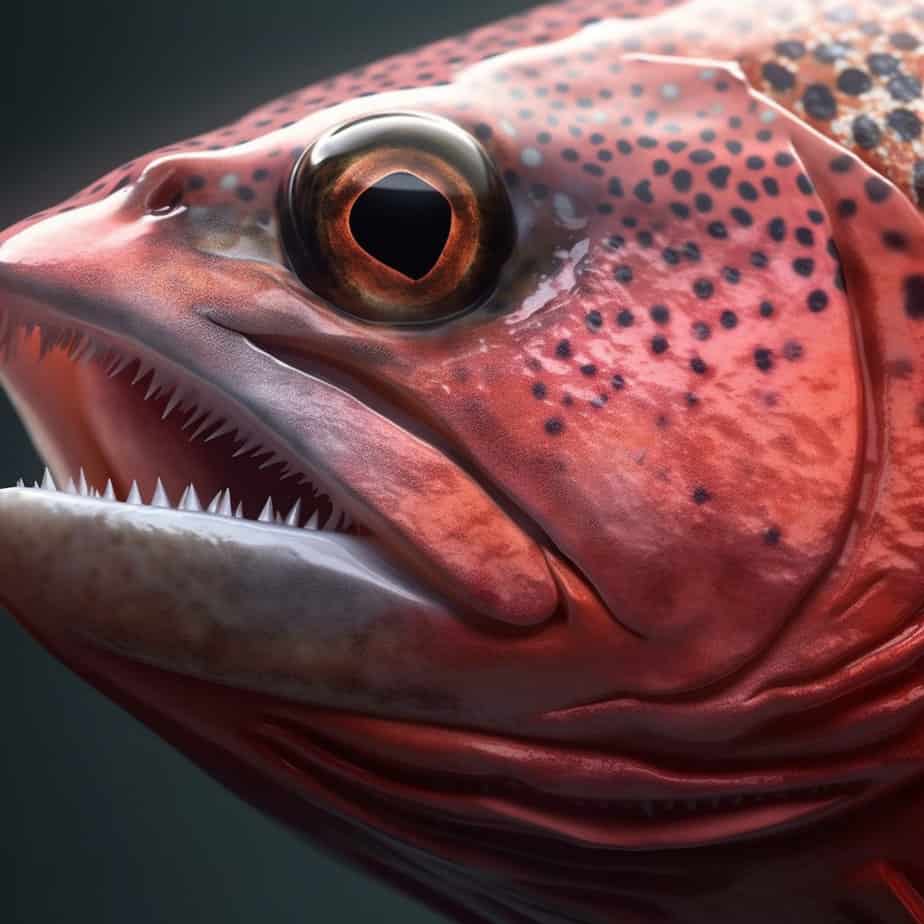
A. Do Fish Eat Phytoplankton?
When it comes to the diet of fish, there is a wide variety of food sources depending on the species. While some fish are carnivorous and primarily feed on other fish or invertebrates, others have a more herbivorous diet and consume plants and algae. Phytoplankton, which are microscopic plants that float in the water, play a crucial role in the aquatic food chain as a primary food source for many marine organisms.
While not all fish eat phytoplankton, there are certain species that rely on these tiny plants for their nutrition. Phytoplankton are rich in essential nutrients, including carbohydrates, proteins, and lipids, making them an important part of the diet for many fish species. These microscopic plants are also a vital component of the marine ecosystem, as they contribute to the production of oxygen and serve as the foundation of the oceanic food web.
B. What Fish Eat Phytoplankton?
Among the fish species that consume phytoplankton, salmon are known to play a significant role. Salmon are anadromous fish, meaning they are born in freshwater rivers, migrate to the ocean to mature, and then return to their natal rivers to spawn. Throughout their lifecycle, salmon exhibit different feeding habits depending on their life stage and habitat.
During their time in the ocean, salmon feed on a variety of prey, including small fish, shrimp, and krill. However, they also consume phytoplankton as part of their diet. Phytoplankton serve as an important food source for salmon, especially during their early marine life stages. These tiny plants provide the necessary nutrients for the growth and development of young salmon, helping them build the energy reserves needed for their journey back to freshwater to spawn.
It’s important to note that not all salmon species have the same feeding habits or rely heavily on phytoplankton. Some species, like the Chinook salmon, have a more diverse diet and consume a wide range of prey, including other fish. However, phytoplankton still play a role in the overall diet of salmon, particularly during certain stages of their lifecycle.
In addition to salmon, other fish species that consume phytoplankton include certain types of herring, anchovies, and sardines. These fish are often referred to as filter feeders, as they have specialized structures, such as gill rakers, that allow them to filter out and consume phytoplankton from the water.
Overall, while not all fish eat phytoplankton, these microscopic plants are an essential component of the marine food chain. They provide vital nutrients for many fish species, including salmon, during various stages of their lifecycle. Understanding the role of phytoplankton in the diet of fish helps us appreciate the intricate relationships within the marine ecosystem and highlights the importance of maintaining a healthy balance in our oceans. Conclusion
In conclusion, salmon do consume phytoplankton as part of their diet, especially during their early life stages. Phytoplankton serve as a crucial food source for salmon, providing them with essential nutrients and energy. As filter feeders, young salmon are able to extract these microscopic plants from the water column using their specialized gill rakers. The consumption of phytoplankton not only supports the growth and development of salmon but also contributes to the overall health and productivity of aquatic ecosystems. Understanding the role of phytoplankton in the diet of salmon is important for the conservation and management of these iconic fish species. By ensuring the availability of healthy phytoplankton populations, we can help sustain the populations of salmon and maintain the delicate balance of our marine ecosystems.
Frequently Asked Questions
Does salmon eat zooplankton?
Yes, salmon, especially in their early stages of life, do consume zooplankton. It forms a crucial part of their diet, providing them with necessary nutrients for growth and development.
Do salmon eat at night?
Salmon are opportunistic feeders and can eat at any time of the day or night. Their feeding habits largely depend on the availability of food and their specific life stage.
Do Chinook salmon eat plankton?
Yes, Chinook salmon, particularly in their juvenile stage, consume plankton. As they grow, their diet expands to include larger prey like small fish and invertebrates.
Do salmon eat phytoplankton?
No, salmon do not typically eat phytoplankton. They are carnivorous and their diet mainly consists of zooplankton, insects, and smaller fish. Phytoplankton, however, plays a crucial role in the marine food chain, serving as food for the zooplankton and small creatures that salmon eat.
Do salmon eat seaweed?
No, salmon do not eat seaweed. They are carnivorous and their diet primarily consists of other aquatic organisms like zooplankton, smaller fish, and insects.
Does salmon eat seaweed?
No, salmon do not consume seaweed. They are carnivorous and their diet is primarily composed of other aquatic organisms.
Can salmon eat phytoplankton?
While salmon can ingest phytoplankton incidentally, they do not actively seek or consume it as a primary food source. Their diet mainly consists of zooplankton, smaller fish, and insects.
Does salmon eat phytoplankton?
No, salmon do not typically consume phytoplankton. They are carnivorous and their diet primarily consists of zooplankton, smaller fish, and insects.
Will salmon eat seaweed?
No, salmon do not eat seaweed. They are carnivorous and their diet consists mainly of other aquatic organisms.
Do salmon eat when spawning?
No, salmon typically do not eat when they are spawning. They rely on stored energy reserves during this period. After spawning, most salmon species die, completing their lifecycle.

